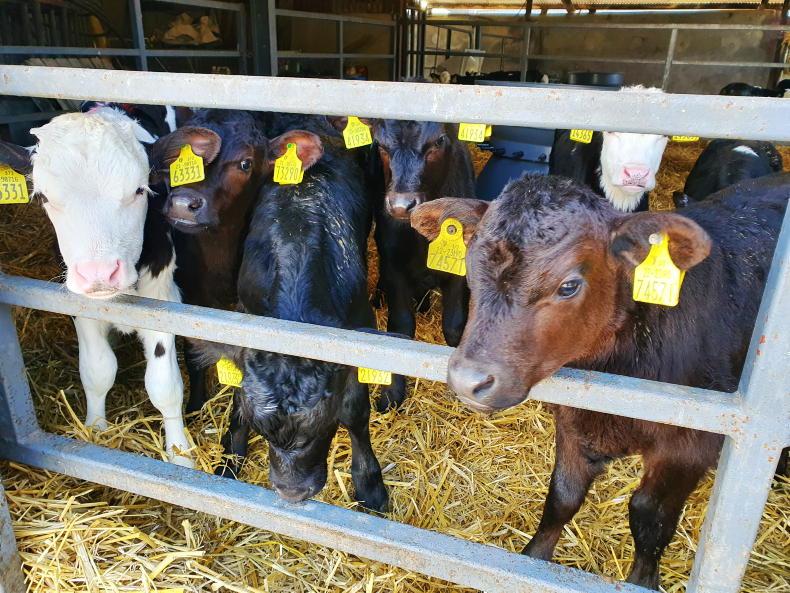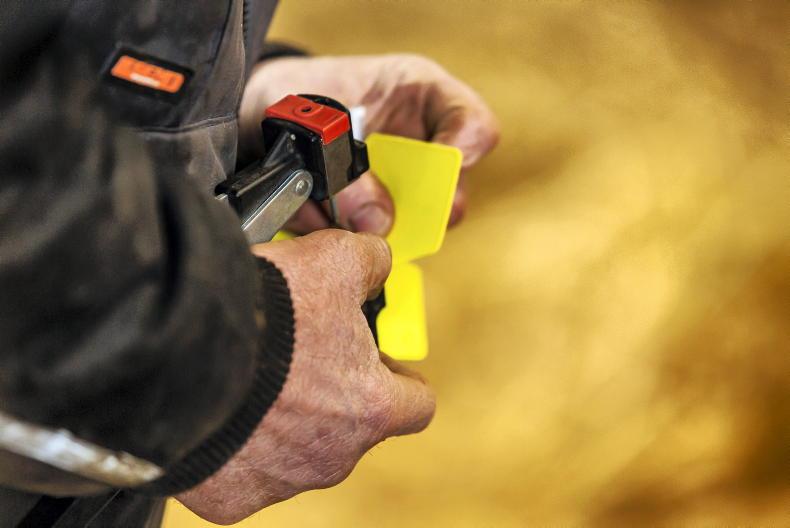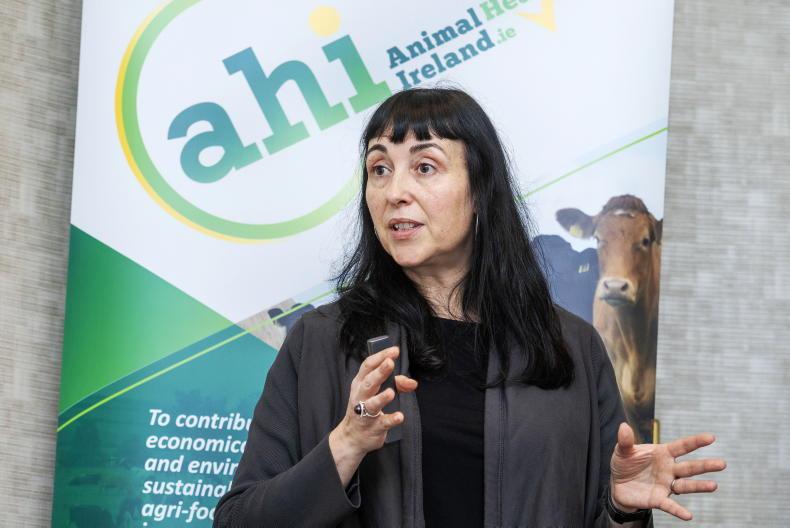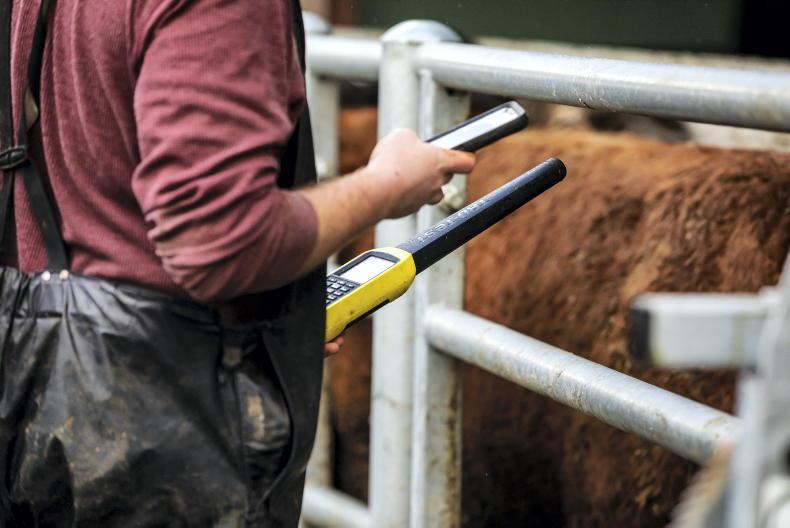The Bovine Viral Diarrhoea (BVD) national eradication programme is entering its ninth year of mandatory testing in 2021. Since the programme became mandatory in 2013, some 20,407,852 calves have been tested up to the week ending 2 December 2020.
There were also in the region of another 500,000 calves tested across approximately 10,000 herds which participated in the voluntary phase of the programme in 2012.
Tissue tagging has been the mainstay of the programme since it was launched, despite the initial targets being three years of tissue tag testing followed by three years of serological surveillance of herds (for example, bulk milk antibody testing or targeted serological testing).
The experience from other eradication programmes and non-compliance by some herds in moving animals which tested positive for BVD to slaughter led to a reassessment and extension of the initial tissue-tag testing targets.
Farmers will be happy to hear the end is in sight with hopes of securing BVD-free status by the end of 2022. Farmers have invested to the tune of €9m per year but this has delivered savings estimated at €102m annually.
Final furlong
Mandatory tissue testing will continue for 2021, while reports also suggest it is likely that mandatory tissue tagging will be carried over into 2022. This is part of the final push to eradicate the disease, with plans for 2020 including implementing some changes to the programme so that it is aligned to the animal health laws which come into force in early 2021 and achieving recognition for the programme at EU level. This is vital to securing BVD-free status.
Other targets included in the BVD eradication programme business plan for 2020 included progressing the technical working group’s (TWG) recommendations to ensure this happens. This includes exploring post-eradication surveillance measures, such as routine bulk tank milk sampling testing for dairy herds and communication networks around these changes. A move to post-eradication surveillance testing will also require changes to the national database, along with developing training and operational protocols.
Continued progress
The BVD national eradication programme continues to make significant progress on an annual basis. Table 1 details the results from the programme from 2013 to 2019 and also includes performance for 2020 up to the week ending 2 December, along with a comparison for the corresponding period in 2019.
As can be seen, the number of calves testing persistently infected (PI) – calves with an initial positive or inconclusive result without a negative retest result – stands at 692 head for the year to date.
This compares with 925 head for the corresponding period in 2019. A look back to the 13,877 calves recorded as PI in 2013 shows the level of progress made over the last eight years.
Tighter restrictions introduced by the Department of Agriculture in recent years have also been integral to improvements made. The rules with the greatest impact have been animal movement restrictions placed on herds that identify a PI animal and fail to move them off the farm for direct slaughter, while tighter protocols around testing and compensation have also paid dividends.
PI retention
As reflected in Table 1, there are only six herds currently retaining one or more PI calves born in 2020 beyond three weeks of the first test confirming the presence of a PI animal.
This is from a pool of 382 herds deemed as positive in 2020, which, again, is significantly below the 547 herds classed as positive in 2019. There has also been further reduction in the number of tissue tag samples presented for laboratory analysis and identified as not containing a tissue sample.
After steady throughput in the early years of the programme, the incidence of empty tags spiked in 2017 and 2018. It is currently running at 18,636 empty samples, compared with 21,136 empty tissue samples in 2019. This is despite 35,322 extra samples being submitted for analysis.
Financial supports
The Department of Agriculture does not typically announce details of its financial supports programme for animals identified as a PI and moved to slaughter within the required time frame until early in the new year.
Reports indicate that it is not envisaged that there will be any major changes made to the current financial support programme in place for 2020 but this has yet to be confirmed. This varies for dairy and beef animals and is as follows:
Dairy herds
€160 if the female dairy and dairy-cross calves are removed within 10 days of the first positive or inconclusive test.€30 if the female dairy and dairy-cross calves are removed between day 11 and 21 of the first positive or inconclusive test.€30 towards the disposal of dairy bull calves through the abattoir or knackery within 14 days of the first positive or inconclusive test.Beef herds
€220 if the calf is removed within 10 days of the first positive or inconclusive test.€30 if the calf is removed between day 11 and 21 of the first positive or inconclusive test.As the programme moves into the final stages, it is likely that there will be a renewed focus in ensuring that infection in herds with positive results is resolved rapidly, to prevent further transmission within or between herds.
A further focus will be on ensuring that the status of the small numbers of animals for which a valid test result is not recorded on the programme database is resolved.
The Bovine Viral Diarrhoea (BVD) national eradication programme is entering its ninth year of mandatory testing in 2021. Since the programme became mandatory in 2013, some 20,407,852 calves have been tested up to the week ending 2 December 2020.
There were also in the region of another 500,000 calves tested across approximately 10,000 herds which participated in the voluntary phase of the programme in 2012.
Tissue tagging has been the mainstay of the programme since it was launched, despite the initial targets being three years of tissue tag testing followed by three years of serological surveillance of herds (for example, bulk milk antibody testing or targeted serological testing).
The experience from other eradication programmes and non-compliance by some herds in moving animals which tested positive for BVD to slaughter led to a reassessment and extension of the initial tissue-tag testing targets.
Farmers will be happy to hear the end is in sight with hopes of securing BVD-free status by the end of 2022. Farmers have invested to the tune of €9m per year but this has delivered savings estimated at €102m annually.
Final furlong
Mandatory tissue testing will continue for 2021, while reports also suggest it is likely that mandatory tissue tagging will be carried over into 2022. This is part of the final push to eradicate the disease, with plans for 2020 including implementing some changes to the programme so that it is aligned to the animal health laws which come into force in early 2021 and achieving recognition for the programme at EU level. This is vital to securing BVD-free status.
Other targets included in the BVD eradication programme business plan for 2020 included progressing the technical working group’s (TWG) recommendations to ensure this happens. This includes exploring post-eradication surveillance measures, such as routine bulk tank milk sampling testing for dairy herds and communication networks around these changes. A move to post-eradication surveillance testing will also require changes to the national database, along with developing training and operational protocols.
Continued progress
The BVD national eradication programme continues to make significant progress on an annual basis. Table 1 details the results from the programme from 2013 to 2019 and also includes performance for 2020 up to the week ending 2 December, along with a comparison for the corresponding period in 2019.
As can be seen, the number of calves testing persistently infected (PI) – calves with an initial positive or inconclusive result without a negative retest result – stands at 692 head for the year to date.
This compares with 925 head for the corresponding period in 2019. A look back to the 13,877 calves recorded as PI in 2013 shows the level of progress made over the last eight years.
Tighter restrictions introduced by the Department of Agriculture in recent years have also been integral to improvements made. The rules with the greatest impact have been animal movement restrictions placed on herds that identify a PI animal and fail to move them off the farm for direct slaughter, while tighter protocols around testing and compensation have also paid dividends.
PI retention
As reflected in Table 1, there are only six herds currently retaining one or more PI calves born in 2020 beyond three weeks of the first test confirming the presence of a PI animal.
This is from a pool of 382 herds deemed as positive in 2020, which, again, is significantly below the 547 herds classed as positive in 2019. There has also been further reduction in the number of tissue tag samples presented for laboratory analysis and identified as not containing a tissue sample.
After steady throughput in the early years of the programme, the incidence of empty tags spiked in 2017 and 2018. It is currently running at 18,636 empty samples, compared with 21,136 empty tissue samples in 2019. This is despite 35,322 extra samples being submitted for analysis.
Financial supports
The Department of Agriculture does not typically announce details of its financial supports programme for animals identified as a PI and moved to slaughter within the required time frame until early in the new year.
Reports indicate that it is not envisaged that there will be any major changes made to the current financial support programme in place for 2020 but this has yet to be confirmed. This varies for dairy and beef animals and is as follows:
Dairy herds
€160 if the female dairy and dairy-cross calves are removed within 10 days of the first positive or inconclusive test.€30 if the female dairy and dairy-cross calves are removed between day 11 and 21 of the first positive or inconclusive test.€30 towards the disposal of dairy bull calves through the abattoir or knackery within 14 days of the first positive or inconclusive test.Beef herds
€220 if the calf is removed within 10 days of the first positive or inconclusive test.€30 if the calf is removed between day 11 and 21 of the first positive or inconclusive test.As the programme moves into the final stages, it is likely that there will be a renewed focus in ensuring that infection in herds with positive results is resolved rapidly, to prevent further transmission within or between herds.
A further focus will be on ensuring that the status of the small numbers of animals for which a valid test result is not recorded on the programme database is resolved.










SHARING OPTIONS